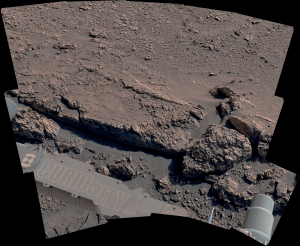Cassini is orbiting Saturn with a 23.9-day period in a plane inclined 53.4 degrees from the planet's equatorial plane. The most recent spacecraft tracking and telemetry data were obtained on Aug. 20 using one of the 34-meter diameter Deep Space Network stations at Madrid, Spain.
Cassini is orbiting Saturn with a 23.9-day period in a plane inclined 53.4 degrees from the planet's equatorial plane. The most recent spacecraft tracking and telemetry data were obtained on Aug. 20 using one of the 34-meter diameter Deep Space Network stations at Madrid, Spain. Except for some science instrument issues described in previous reports (for more information search the Cassini website for CAPS and USO), the spacecraft continues to be in an excellent state of health with all of its subsystems operating normally. Information on the present position of the Cassini spacecraft may be found on the "Present Position" page at: http://saturn.jpl.nasa.gov/mission/presentposition/.
The S79 command sequence, which controlled Cassini for the past ten weeks, is no longer active. That doesn't mean the flight team isn't still working on it, though. An "S79 as-flown sequence of events" is being produced to list all sequenced commands, all additional commands sent in real time, and ground-based tracking events. It will serve for historical engineering reference, and will help science teams interpret and later publish the results of science data gathered during the period. Work proceeds on S81 and S82, each containing ten weeks' worth of commands. S83 development has come over the horizon, and planning continues for Cassini's final mission phase in 2016 and 2017. S80 took control of the flight system this week.
Wednesday, Aug. 14 (DOY 226)
The Visible and Infrared Mapping Spectrometer (VIMS) was the first instrument to carry out an observation under control of the S80 command sequence, which was uplinked last Friday night. It had the spacecraft turn and watch the sunlit side of the rings for seven hours, while the other optical remote-sensing instruments also recorded data, as was typically done for most observations this week. The Imaging Science Subsystem (ISS) then led an observation in the satellite orbit campaign, looking at small known objects near Saturn, and possibly discovering more of them.
Thursday, Aug. 15 (DOY 227)
ISS, VIMS, and the Composite Infrared Spectrometer (CIRS) observed Titan from a range of 2.2 million kilometers, monitoring its clouds and atmospheric activity. This observation was repeated on Tuesday from a somewhat greater distance. CIRS then turned the spacecraft to point to Saturn and mapped mid-infrared emissions, showing temperatures of ring material in Saturn’s shadow for 12 hours to help determine the ring particles' thermal inertia.
Friday, Aug. 16 (DOY 228)
The Ultraviolet Imaging Spectrograph (UVIS) observed Saturn’s aurora for eleven hours, then CIRS returned to mapping temperatures of the shadowed rings for four hours, an observation that was repeated on Sunday.
Saturday, Aug. 17 (DOY 229)
ISS reacquired and tracked the orbits of known "propellers" (http://go.usa.gov/YyGR) in Saturn’s rings. CIRS then created a map of the north polar region to observe temperatures in the atmospheric vortex there. Finally, VIMS watched the red star W Hydrae as it was occulted by the rings.
While CIRS was mapping the north polar region, Cassini silently sped through periapsis going 23,980 kilometers per hour relative to the planet. These days, periapsis is not as close to the planet as it used to be, since Cassini's orbit is less highly elliptical; today's was nearly as far from Saturn as Titan is; apoapsis next week will be less than twice that distance.
Sunday, Aug. 18 (DOY 230)
The Deep Space Network (DSN) tracked Cassini on seven occasions this week, using stations in Australia and Spain. Such is the precision of this network that Cassini's navigators routinely measure the line-of-sight component of the spacecraft's velocity to within fractions of a millimeter per second, and distance to within a meter or so. Digital communications through the DSN, which means telemetry from Cassini's instruments and commands from the flight team, are typically 100% accurate despite the enormous distance.
Monday, Aug. 19 (DOY 231)
How do Cassini scientists name the disturbed ring material known as "propellers" that they find in Saturn's rings? After famous aviators, of course. A view of "Earhart" in the A ring was featured today. For a sense of scale the Enke Gap, which can be seen inwards of the propeller, is 325 kilometers wide: /resources/15878
Tuesday, Aug. 20 (DOY 232)
ISS began watching the F ring, the narrow, continuously evolving strand just outside the main rings, to make a fifteen-hour low-resolution movie.






























